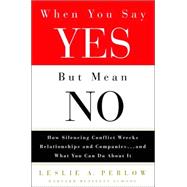
| Introduction: Covering Up Rather Than Confronting Difference | p. 1 |
| The Unacknowledged Costs of Silencing Conflict | |
| The Many Forms of Silence | p. 13 |
| Why the Rules of the Game Favor Silence | p. 25 |
| How the Silent Spiral Works | p. 35 |
| The Costs of Saying Yes When You Mean No | p. 42 |
| The Speed Trap | p. 52 |
| The Silent Spiral in Motion | |
| What Clyde and Howie Wouldn't Say | p. 67 |
| The Founders and the New CEO Mask Their Differences | p. 94 |
| No One's Explaining, No One's Asking | p. 120 |
| Bad Endings | p. 141 |
| Escaping the Silent Spiral | |
| Effectively Expressing Difference | p. 159 |
| Finding Support and Supporting Others | p. 180 |
| Epilogue: What Might Have Been... | p. 193 |
| Endnotes | p. 201 |
| Acknowledgments | p. 239 |
| Index | p. 243 |
| Table of Contents provided by Ingram. All Rights Reserved. |
The New copy of this book will include any supplemental materials advertised. Please check the title of the book to determine if it should include any access cards, study guides, lab manuals, CDs, etc.
The Used, Rental and eBook copies of this book are not guaranteed to include any supplemental materials. Typically, only the book itself is included. This is true even if the title states it includes any access cards, study guides, lab manuals, CDs, etc.
Excerpted from When You Say Yes but Mean No: How Silencing Conflict Wrecks Relationships and Companies... and What You can Do about It by Leslie Perlow
All rights reserved by the original copyright owners. Excerpts are provided for display purposes only and may not be reproduced, reprinted or distributed without the written permission of the publisher.